Filming on location in Ethiopia with Location Fixer Firew Ayele
With a background in tourism, Firew has been a location fixer for over ten years. He has worked extensively with foreign media, including the BBC and Lonely Planet, on a range of documentaries including Real Man, Psychology of War and Operation Moses.
Since 2005, Firew has owned and operated Across Abyssinia. He is based in Addis Ababa but works across the whole of Ethiopia as well as in Djibouti and Somalia.
Tell me about Ethiopia.
The Awash valley in the heart of Ethiopia contains one of the most important groupings of palaeontological sites on the African continent with remains dating back at least four million years.
Northern Ethiopia is also rich with historical sites and amazing locations. You can find churches and monasteries, awesome mountainous highland landscapes, the source of the Nile, spectacular scenery in the Semein Mountains (the Grand Canyon of Africa) and a wide variety of wildlife.
It is studded with active volcanoes, hot springs, solidified black lava flows and vast salt-encrusted basins.
Due to the effects of erosion, UNESCO registered Simien Mountain National Park on the Ethiopian plateau has one of the most spectacular landscapes in the world with jagged mountain peaks, deep valleys and sharp precipices dropping some 1,500 metres. The park is home to some extremely rare animals such as the Gelada baboon, the Simien fox and the Walia ibex; a goat found nowhere else in the world.
The Danakil, or Dallol, Depression is one of the hottest places on Earth and one of the lowest points on the African continent. It is studded with active volcanoes, hot springs, solidified black lava flows and vast salt-encrusted basins.
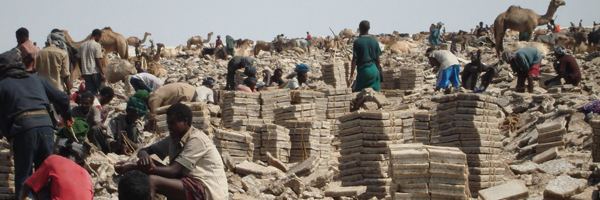 The Depression was the main source of the salt bars (pictured above) used as a currency throughout Ethiopia for more than a 1,000 years. Everyday more than 5,000 camels arrive and depart with salt bars from the Danakil to the central highland. This is the best place in the world to see long-chained camel caravans.
The Depression was the main source of the salt bars (pictured above) used as a currency throughout Ethiopia for more than a 1,000 years. Everyday more than 5,000 camels arrive and depart with salt bars from the Danakil to the central highland. This is the best place in the world to see long-chained camel caravans.
Erta Ale Volcano ranks as one of the most alluring and physically challenging natural attractions anywhere in Ethiopia. It is a shield volcano with a base diameter of 30 km and 1 km square caldera at its summit. It also has the world's only permanent lava lake.
There is muc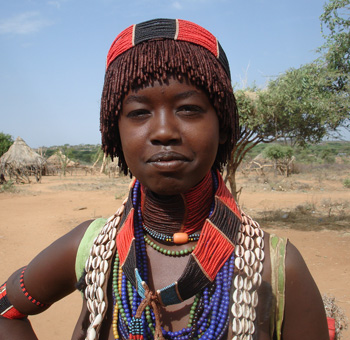 h, much more with many other UNESCO registered sites. The Rock-Hewn Churches at Lalibela, the unofficial 8th wonder of the world, the Fortified Historic Town of Harar Jugol, Fasil Ghebbi at Gondar, the African Camelot and the wilderness of the Omo River's lower valley.
h, much more with many other UNESCO registered sites. The Rock-Hewn Churches at Lalibela, the unofficial 8th wonder of the world, the Fortified Historic Town of Harar Jugol, Fasil Ghebbi at Gondar, the African Camelot and the wilderness of the Omo River's lower valley.
And then of course there are the people. The Borena are people of the morning; the Konso are people of wood and stone; the Hamar (pictured) are people of Bull Jumping; the Dorze are masters of weaving; the Karo are masters of body painting. All their local markets are breathtaking.
What locations are most commonly used by film crews when they film in Ethiopia?
Apart from documentaries, Ethiopia is untouched, although some film companies are now starting to shoot in the north of the country.
What are the rarer, more unusual locations in Ethiopia?
The list is endless (see above) but Ethiopia's early churches carved out of mountains are unique.
What has been your most difficult location assignment to date and why?
It was in the Danakil Depression and at the Erta Ale Volcano. I was working on a BBC documentary called The Hottest Place on Earth. It was hard because there were a lot of people involved - 26 crew members from the BBC and 34 locals. We spent a month in the middle of nowhere with temperatures reaching 45 Degress Celsius!
What types of production do you work on the most?
I mostly do documentaries and TV. The last job I did was for Koncern TV from Denmark. The Producer was Thomas Grue Jakobsen and the lead actors were Michael Christiansen and Karsten Thomas Green Petersen.
Are there any particular tips that you would like to share with our audience about filming in Ethiopia?
You will always need a business visa to get a film permit in Ethiopia. There are no helicopters for hire so aerial shooting tends to be done from a Cessna. It's very easy to film in Ethiopia. Customs is quick and easy.
Which are the best airports to use to film in your region and who flies there?
Addis Ababa Bole airport, Allula Aba Nega airport, Yohanes airport and Bahir Dar airport are all very good. Except for Bole Airport, most are used for domestic flights.
What are the most film-crew-friendly hotels in your region and what and where is your favourite wrap party venue?
Hilton Hotel, Inter Continental Hotel, Queen Sheba Hotel, Panoroma Hotel.
When you are not location scouting or shooting what do you do when you have time off and what would you recommend film crew and cast to do to relax in your region?
I like the shores of Lake Langano and the surrounding forest in the south of Ethiopia - the trees are very old and beautiful.
Thank you.
Click here to contact Firew.
Related Posts
- Filming on location in Jackson Hole with Location Manager Ian Gersten
- Filming in Bolivia with the Benavides family
- TLG scouts Iceland with Dark Knight Rises and Bourne Location Managers
- The Desert – a filming survival guide
- RSA races digital greyhounds on location on California’s salt flats for Absolut
- Location Advisor – Exploring Film Friendly Hotels in Morocco
- Filming in Peru with Location Manager Deborah McLauchlan
- Interview with Kristy Liang, Entertainment, Film & Production Sales Manager at the Fairmont Hotel San Francisco
Related posts:
Comments
Not Logged in
You must be logged in to post a comment
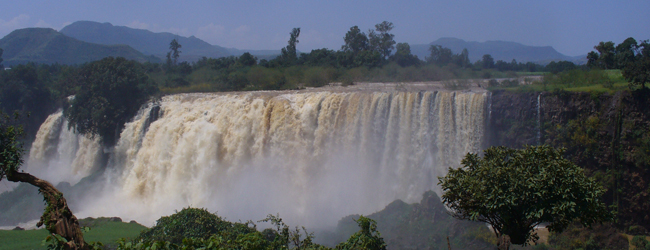
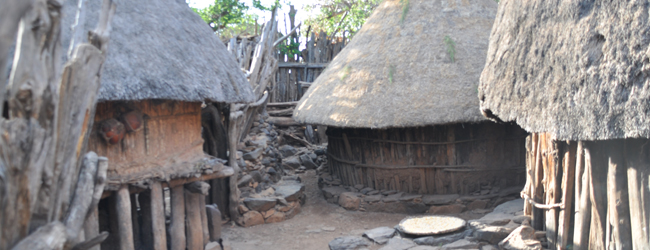
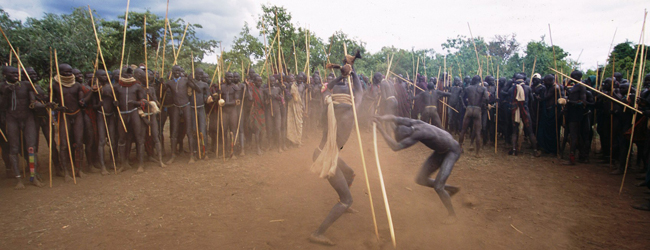
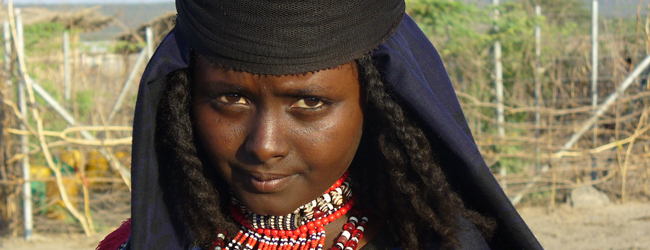
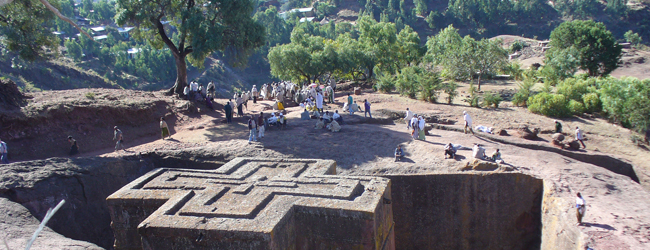
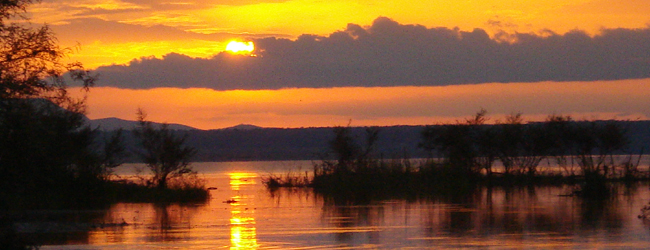
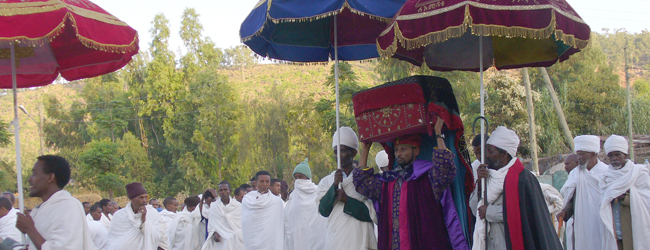


There are 1 comments